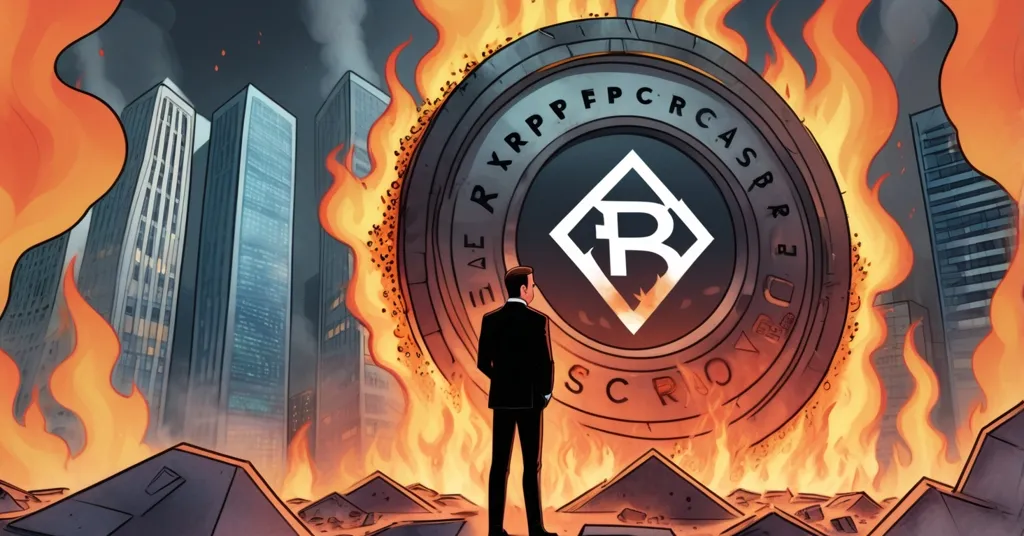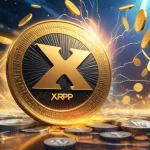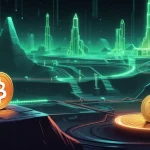XRP Supply Burn: Can a 20% Cut Spark a $66 Price Surge or Is It Just Hype?

XRP Supply Burn: Could a 20% Cut Drive a $66 Price Surge? Hype vs. Reality
Ripple’s XRP is no stranger to heated debates in the crypto world, and the latest buzz about burning 20% of its massive supply has ignited fresh speculation. Could torching nearly 20 billion tokens from its escrow vault send XRP’s price rocketing to $66, or is this just another pipe dream for desperate holders?
- Supply Slash: A 20% burn would drop XRP’s total supply from 99.9 billion to 79.92 billion, mostly from escrow.
- Price Fantasy: A theoretical model pegs XRP at $66.67 in an ultra-bullish scenario—pure speculation.
- Hard Truth: Token burns don’t always deliver, as Ripple’s CTO highlights with Stellar’s failed 2019 attempt.
Burn Basics: What Does a 20% Cut Mean?
Let’s break down this speculative scenario that’s got XRP fans buzzing, sparked by a discussion from TheCryptoBasic on X. XRP currently has a total supply of approximately 99.9 billion tokens. About 60 billion of those are in circulation, while 35 billion are locked away in escrow under Ripple’s control. This escrow system, set up in 2017, releases up to 1 billion tokens monthly to prevent market flooding, with unused portions returned to the vault. The idea of burning 20% of the total supply—roughly 19.98 billion tokens—would shrink it to 79.92 billion, slashing the escrow pool to just 15.02 billion while leaving the circulating supply unchanged at 60 billion.
For the uninitiated, a token burn means permanently removing tokens from existence by sending them to an inaccessible wallet address. Think of it like shredding unsold concert tickets—if demand for the event is high, fewer tickets could drive up their value; if no one’s interested, it’s just wasted paper. The theory behind burns is to create scarcity, which, paired with steady or growing demand, might push prices up. But XRP’s enormous supply and Ripple’s tight grip on escrow make this a unique case compared to, say, Bitcoin’s hard-coded 21 million cap.
Numbers Game: The $66.67 Price Mirage
TheCryptoBasic ran this hypothetical by Google Gemini, an AI tool, to model the potential impact of such a massive burn. The output was a jaw-dropping “ultra-bullish” projection: XRP’s market cap could balloon to $4 trillion—a 28x jump from its current $144 billion—and the price per token could hit $66.67, a 27.8x surge from today’s roughly $2.40 (as of recent data, subject to fluctuation). That’s the kind of number that turns a modest stack into generational wealth—if you believe in fairy tales. For a deeper look into this speculative price jump, check out this analysis on XRP’s price potential with a supply cut.
“As a result, we asked Google Gemini what might happen if Ripple burned 20% of XRP’s total supply. In response, Gemini presented a hypothetical model but clarified that the prediction was entirely theoretical. It explained that the outcome would depend on real-world factors like…” – TheCryptoBasic (via Twitter post)
Let’s ground this in reality. That $66.67 figure is like predicting a lottery jackpot with a single ticket—mathematically possible, but don’t quit your day job. The model assumes a perfect storm: skyrocketing demand, regulatory green lights (despite Ripple’s ongoing SEC battle in the U.S.), and widespread adoption of XRP for global payments. That’s a mountain of “ifs” in a market where even Bitcoin, the king of crypto, struggles to hold gains without tangible catalysts.
Escrow Explained: Control or Stability?
Ripple’s escrow mechanism is at the heart of this debate. It’s designed to stabilize XRP by preventing a flood of tokens from crashing the market—a real concern with 60 billion already out there. Every month, a controlled release happens, and anything not used goes back into lockdown. Sounds prudent, but it’s a lightning rod for criticism. Many XRP holders argue it suppresses price growth, while others see it as a safeguard. Then there’s the decentralization issue: no single entity should dominate a crypto project (a principle Bitcoin lives by), but Ripple’s influence over 35 billion tokens raises eyebrows about XRP’s independence, even if the XRP Ledger itself is open-source.
This escrow shapes market psychology. Some view it as a looming sell-off threat if Ripple releases too much; others see it as a strategic reserve that could be burned or managed to boost confidence. A 20% burn would shrink that overhang, potentially easing fears—but only if investors trust the move isn’t just window dressing.
Historical Lessons: Stellar’s Burn Flop
Ripple’s CTO, David Schwartz, isn’t buying the hype around burns as a silver bullet, and he’s got history on his side. He’s pointed to Stellar, a rival blockchain, which in 2019 burned over 50% of its supply—55 billion tokens—in a bold move to juice its value. The result? A fleeting price bump followed by a swift return to irrelevance. Schwartz’s takeaway is blunt: cutting supply means nothing without demand to match. Stellar’s blockchain tokenomics experiment fizzled because no one cared enough to buy in post-burn, a cautionary tale for XRP enthusiasts banking on scarcity alone.
Why did Stellar’s burn fail? It wasn’t just poor timing—though 2019 wasn’t exactly a bull market heyday. There was no surge in utility or marketing push to drive interest, and broader adoption lagged. XRP faces similar risks: without a groundswell of real-world use, like banks embracing it for remittances, a burn could be a hollow gesture. Demand, not token tricks, is the true kingmaker in crypto.
Ripple’s Dilemma: Burn or Build?
So why does this escrow chatter keep XRP holders glued to X? It’s all about sentiment. Those 35 billion locked tokens are a psychological anchor—some see a ticking time bomb of sell pressure, others a controlled buffer. Speculation like this 20% burn scenario only fuels the noise, distracting from XRP’s core value proposition: fast, cheap cross-border payments via the XRP Ledger. Transactions settle in 3-5 seconds compared to days for traditional systems like SWIFT, and Ripple has partnerships with financial institutions globally. Yet, adoption remains patchy, overshadowed by legal fights and entrenched competition.
Historically, Ripple has dodged the burn question. David Schwartz and other execs have hinted in past AMAs and blog posts that supply cuts aren’t a priority—focus is on utility, not gimmicks. They’ve never burned escrow tokens en masse, and there’s no sign they will. Critics argue this central control undermines XRP’s claim to being a decentralized asset, unlike Bitcoin’s untouchable scarcity. Would slashing supply make XRP feel more “Bitcoin-like,” or is Ripple’s corporate shadow too ingrained to shake off?
Reality Check: Why $66 Is a Long Shot
Let’s cut the crap: a $66.67 XRP price isn’t on the horizon. Gemini’s projection is a mathematical fantasy, not a prediction. It’s the kind of figure shilled by market manipulators on social media, and we’re not here to peddle that nonsense. Crypto economics isn’t about slashing supply and hoping for miracles. Demand, utility, and market conditions weigh heavier, and XRP’s track record shows it’s not immune to bear markets or legal roadblocks. Even Bitcoin, with its unassailable scarcity, needs real-world triggers to rally—why would XRP, with its baggage, fare differently?
That said, burns aren’t entirely useless. If Ripple paired a supply cut with a major win—like settling the SEC lawsuit favorably or landing a blockbuster banking partnership—it could amplify positive vibes. But alone? It’s a superficial fix without deeper substance. We’re all for disruption and decentralization, but we don’t buy into hype without hard evidence.
Alternative Paths: Beyond Token Burns
What could Ripple do instead of playing with supply numbers? Double down on proving XRP’s worth in cross-border payments. They’ve got a head start with tech that outpaces legacy systems, but adoption is the bottleneck. Expanding partnerships with global banks, piloting more real-world use cases, or enhancing the XRP Ledger’s capabilities for DeFi applications could shift the narrative from “will they burn?” to “who’s using it?”
Regulatory clarity is another linchpin. The SEC lawsuit, alleging XRP is an unregistered security, has dragged on since 2020 and spooked investors. A favorable outcome could unlock institutional interest, far outstripping any burn’s impact. Ripple’s focus should be on building trust and utility, not chasing quick fixes. In the broader crypto market, with Bitcoin dominance hovering and altcoin speculation often fizzling, XRP needs fundamentals to stand out—not headline-grabbing stunts.
XRP vs. Bitcoin: Scarcity and Purpose
Comparing XRP to Bitcoin reveals stark contrasts in design and ethos. Bitcoin’s 21 million hard cap, enforced by code and a decentralized network, guarantees scarcity—no one can inflate it. XRP’s near-100 billion supply, with a third controlled by Ripple, operates under a different logic, prioritizing availability for transactional use over rarity. Bitcoin is digital gold; XRP aims to be digital cash for global transfers. A burn might nudge XRP closer to a scarcity mindset, but it won’t erase Ripple’s corporate oversight—a sticking point for purists like us who lean Bitcoin maximalist while still seeing altcoins’ niche roles.
Key Takeaways and Questions on XRP Supply Burn Hype
- What happens to XRP’s supply with a 20% burn?
Total supply drops from 99.9 billion to 79.92 billion, cutting escrow from 35 billion to 15.02 billion while circulating supply stays at 60 billion. - Can a supply burn push XRP’s price to $66.67?
Only in a speculative dream scenario with ideal demand and regulatory wins; in reality, it’s highly improbable without fundamental growth. - Do token burns guarantee higher crypto prices?
No—Stellar’s 2019 burn of over 50% of its supply failed to sustain gains, showing supply cuts need demand to have lasting impact. - Why is Ripple’s escrow system so divisive?
It balances market stability by preventing token dumps but fuels criticism over centralized control, clashing with crypto’s decentralization ethos. - Could a burn boost investor trust in XRP?
Possibly, as a signal of commitment to scarcity, but without real adoption in payments or legal clarity, it’s unlikely to move the needle long-term.
This XRP supply burn speculation is a microcosm of crypto’s Wild West nature—full of bold ideas, wild projections, and harsh realities. We’re passionate about Bitcoin’s power to disrupt outdated financial systems with unyielding scarcity and decentralization, but we recognize XRP’s potential to carve a niche in cross-border payments. Yet, unlike Bitcoin’s grassroots strength, XRP’s fate hinges on Ripple’s corporate moves and legal battles. A burn might grab headlines, but it’s no substitute for proving utility in the real world. Until Ripple delivers on adoption and shakes off centralization critiques, XRP holders should keep their champagne corked and their skepticism sharp. We’re here for the revolution, not the hype machine.



